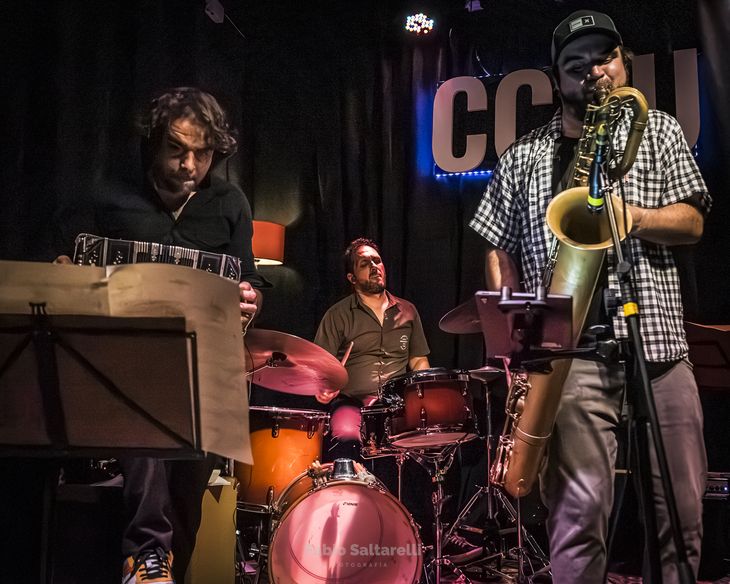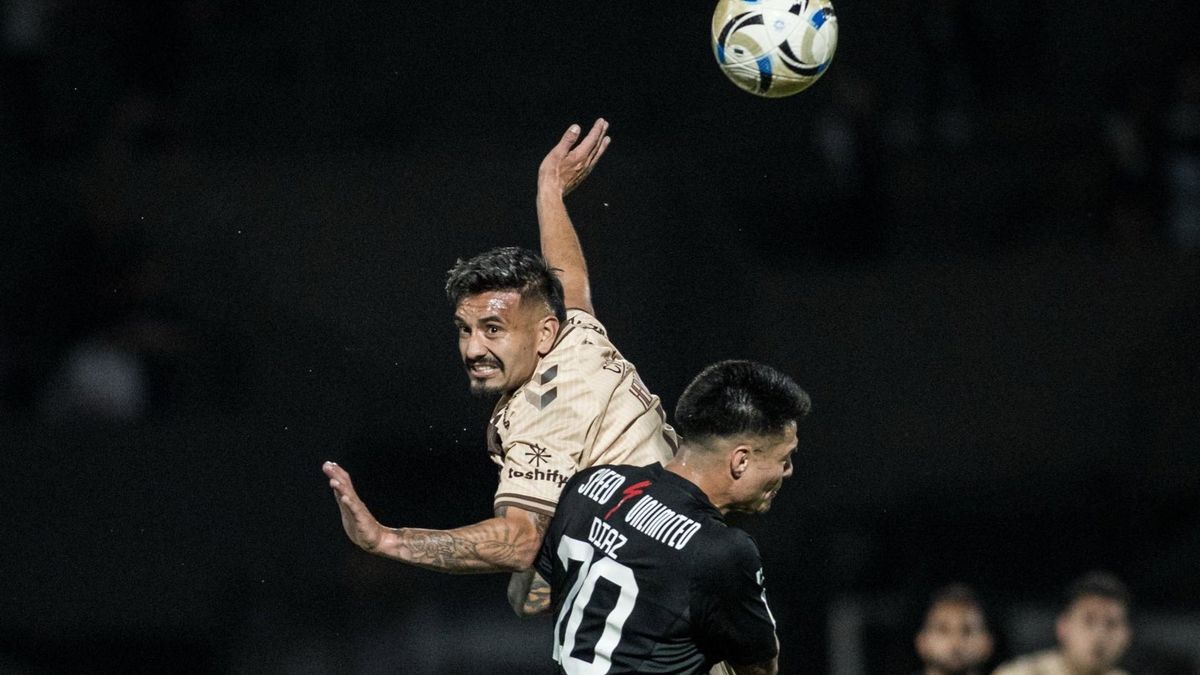“Spotify is a platform in which the algorithm does not help tango because when you put on tango, after two three songs it sounds like Luis Miguel. So it is very difficult to retain the listener of the style”, says Adrián Ruggiero, founder of Tangology who presents his album “Potrero”, on Thursday, May 16 at 9 p.m. at CAFF, Bustamante 772.
The quintet is made up of bandoneonist Adrián Ruggiero, drummer Juan Corrao, Dante Picca on piano, Andrés Jorge on baritone sax, Gonzalo Aldas on double bass. The new album proposes a fusion between jazz and tango. We spoke with Ruggiero.
Journalist: Why Tangology?
Adrian Ruggiero: It is the name of a song by Horacio Malvicino, a member of Astor Piazzolla’s ensemble, where there are flashes of jazz since Malvicino was a very versatile musician who addressed both genres, there are improvisations and it also has an anthology and technology. We are a seed of this mix.
Tangology 2.JPG
Q.: Speaking of anthology, what can you evoke from the Pugliese orchestra?
AR: Countless anecdotes from the family, since my father was the first bandoneon player of that orchestra for 30 years and was the one who led the group when Pugliese was imprisoned for his communist ideals. He is a person that I knew closely, we shared New Year’s Eve parties and when my father died we went on tour with the microphone and my family to witness tributes that the orchestra made to my father. We traveled through Córdoba, Rosario, Montevideo. I have the best memories of Osvaldo making his way before the crowd, with that light that only he brought. I remember talks with the other members of the orchestra, Adrián Guida, Walter Castro, Emilio Balcarce, Julián Plaza, Víctor Lavallén, all transcendent, creators, innovators, they left their mark on Argentine culture, it was an honor to grow up close to all those people. My early childhood was within the framework of the tango sextet with Goyeneche in the Viejo Almacén and recording the album “Reunión de maestros”, a privilege to have grown up close to those monsters. I hope I have been imbued with that magic.
Q: What can you say about the documentary about Pugliese?
AR: The documentary is in full filming after 15 years, although it seems unbelievable, it is a gigantic project that I am having a hard time doing but I am excited about a lot of material, interviews, unpublished, unique archives and a lot of anecdotes. The last day was with the Elio Valdés orchestra in Obras and we were with two of its musicians who function as a cooperative as it was with Pugliese. León has the maestro tattooed with the Atlanta t-shirt, I found it interesting to link two musical worlds.
Q.: With your band Violentango you tour internationally, is tango stronger abroad than in Argentina?
AR: We were in Brazil, Panama, Bogotá, Germany, Barcelona, Switzerland, Sweden, always as an independent band, with a forward-looking view of the genre. Violentango focuses more on rock than jazz and there is a lot of respect for our culture outside, I don’t know if it’s more than here because this is our culture and our people, our cradle, we love playing in Argentina and I feel respect and admiration for our culture here. Sometimes it is strange, if we think about Brazil’s support for local music. We would like there to be more dissemination, visibility and opportunities for tango and folklore.
Q: How did the genre change?
AR: The first edge that sounded very strong came with the groups that began to rock it and attracted the youngest people. The minister with his dreadlocks was a symbol of that cultural and generational passage. Then came Gotan Project or Bajo Fondo, then El Distancia revived the tango with arrangements of traditional songs, with Violentango we turned 20 years old and delved into the new tango. Melingo was a strong link because he came from rock with popularity and the fact that he turned to tango was an endorsement for the style. Samalea with Charly recorded his first bandoneons.
Q: How do you see the new generations of musicians?
AR: There are young bandoneon players, very creative composers, different currents, some more rockers, more jazzy, more fusion with electronics, there are groups that literally substantiate the original arrangements of Troilo, Pugliese, such as Sentimental and Canyengue, which keep the history of the genre alive. Then shows for tourists with a very high level, good arrangements, singers and dancers. Tango is a seal in itself, we have to take it out of the drawer where we have it, it shows itself in a thousand different ways. It can be shown in a suit and tie or sneakers and jeans.
Tangology141223-107-Enhanced-NR.JPG

Q: How do you get along with new technologies and social networks?
AR: It is difficult since I come from text and writing, perhaps the new ways of disseminating, especially Instagram, are based on photos and visuals, so saying everything with images may fall short for me. Today everything is very comprehensive so one can share through many media, there is no need to be on a single platform. With Spotify there is a very strong job that must be done to position the genre within the networks. The playlist always ends up taking you to an ultra-commercial place and when someone plays tango maybe they are facing the opposite way.
Source: Ambito
I am an author and journalist who has worked in the entertainment industry for over a decade. I currently work as a news editor at a major news website, and my focus is on covering the latest trends in entertainment. I also write occasional pieces for other outlets, and have authored two books about the entertainment industry.




